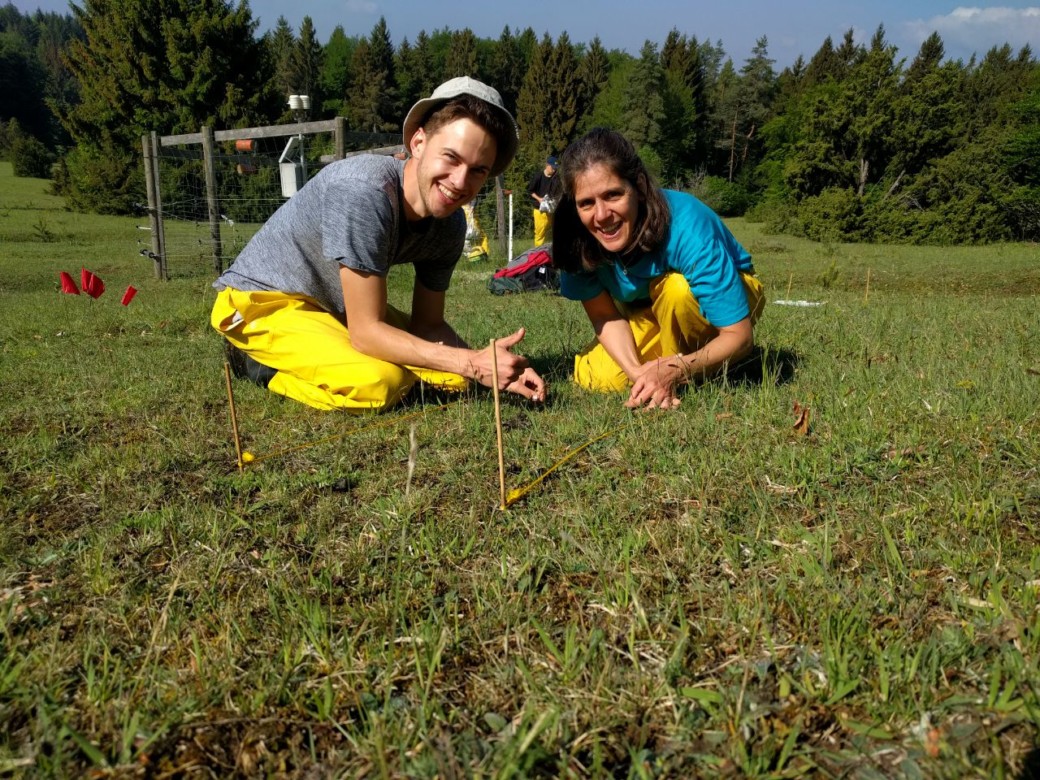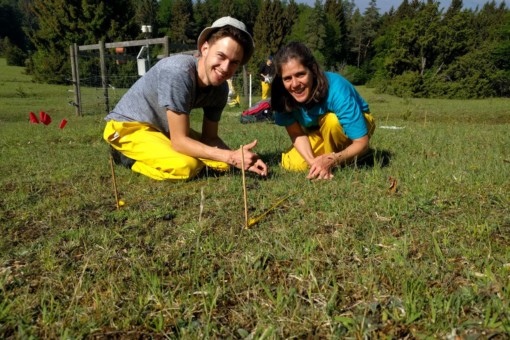Pflanzendiversität und pflanzenbezogene Prozesse
Auch in dieser Projektphase wird das Kernprojekt Botanik die Diversität höherer Gefäßpflanzen, Flechten, Moose und Pilze, die Produktivität von Grünländern und, in Experimenten, der Einfluss von Ausbreitungslimitierung und Störung untersuchen.

Die Hauptziele des vorliegenden Projektes sind:
1. den Einfluss der Landnutzung auf die Diversität von Pflanzen im Grünland und Wald sowie pathogener Pilze im Grünland zu erfassen,
2. die funktionale und phylogenetische Diversität der Grünlandpflanzen unter standardisierten Bedingungen zu messen,
3. die ober- und unterirdische Produktivität und den Stickstoffgehalt im Grünland zu erfassen, und
4. die Pflanzendiversität durch Einsaat, Störung, oder Entfernen von Pflanzen experimentell zu manipulieren, um die Auswirkungen veränderter Diversität auf
Ökosystemprozesse zu testen und zu sehen wie diese Auswirkungen sich zwischen Landnutzungen unterscheiden.
Die wiederholte Erfassung der Diversitäten und Ökosystemprozesse erlaubt es zudem, die Stabilität und Regenerationsfähigkeit der Lebensgemeinschaften zu schätzen, und Änderungen der Diversität und Zusammensetzung der Vegetation mit jener von anderen Taxa in Beziehung zu setzen.
Des Weiteren wird das Projekt wichtige Basisinformationen für andere Projekte zur Verfügung stellen, um den Einfluss der taxonomischen, funktionalen und phylogenetischen Diversität der Pflanzen und Grünlandproduktivität auf Ökosystemprozesse und die Diversität anderer Taxa zu untersuchen.
| Methode | auf 1000 Flächen (GPs) | auf 100 Flächen (EPs) | |
|---|---|---|---|
| Diversität der Pflanzen | |||
| Waldvegetation | je eine Aufnahme im Frühjahr und Herbst, 20 x 20 m | x | |
| jährlich wiederholt | x | ||
| Grünlandvegetation | eine Aufnahme im Sommer, 4 x 4 m | x | |
| jährlich wiederholt | x | ||
| Vegetationshöhe | x | ||
| Biomasse | x | ||
| Artenzahl-Areal-Beziehung | x | ||
| Samenbank | x | ||
| Funktionelle Diversität | Merkmale aus der BIOLFLOR-Datenbank Morphologische Merkmale Ausbreitungsmerkmale Bestäubungsmerkmale | ||
| Genetische Diversität | AFLP bzw. Mikrosatelliten ausgewählter Pflanzen | x | |
| Einsaatexperimente | Einsaat von Grünlandarten aus dem regionalen Artenpool, um Ausbreitungslimitierung zu testen | x | |
| Einsaat von ausgewählten Baumarten in eingezäunte und offene Flächen, um Ausbreitungslimitierung von Bäumen zu testen (geplant) | x | ||
| Messung der Biomasse und des LAIs, um den Einfluss der Diversität auf die Produktivität zu testen | x | ||
| Gewächshausstudie | Keimungserfolg | ||
| Parasiten und Herbivore | Bestimmung des Parasiten- und Herbivorenbefalls (Disteln) | x | |
| Störungsexperimente im Grünland und Wald | Simulation von Tritt und Trockenheit in unterschiedlicher Intensität, um dem Einfluss von Störungen auf die Stabilität unterschiedlich diverser Ökosysteme zu testen | x | |
| Populationsbiologie ausgewählter Arten | Quantifizierung von Populationsdichte, Herbivorie, Pathogenbefall und Bestäuberlimitierung ausgewählter Pflanzen | x |










